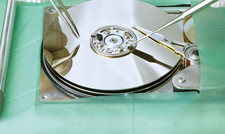Virtualizing complex Linux systems
It's Complicated

© Lead Image © Shawn Hempel, 123RF.com
If you are ready to migrate your hardware RAID system to the virtual world, standard virtualization and forensics tools are ready for the task.
Ever since the virtualization epidemic hit the datacenter, server filesystems have increasingly taken the form of images, and conventional partitions have been on the decline. The benefit for the admin is that the filesystem images are easier to move or manipulate.However, if you want to use physical disks – typically block devices named /dev/sd<x> or the like – in your own cloud, you need to convert them to suitable virtual disk image formats, such as .vdi or .vmdk.
Popular conversion programs, such as qemu-img --convert (for KVM), can convert your physical partition to a virtual form, but these tools are not designed to address complex situations. For instance, if you want to build a RAID system from multiple disks, you need to master a few tricks, and this article will help you do so. Incidentally, the approach described here relies on forensic tools, because I developed this technique while investigating a crime case. For virtualization, I will rely on VirtualBox [1] version 4.
Problems with RAID Controllers
Physical systems are not always easy to virtualize. For example, you can experience driver problems if the hard disks come from machines in which the RAID systems are managed by hardware controllers. Some tools do exist for simple scenarios. KVM offers a number of options for smoothing out the process. If you rely on VirtualBox, you can easily convert a hard disk /dev/sdb by using:
[...]
Buy this article as PDF
(incl. VAT)
